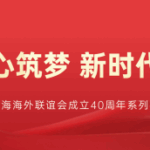Notice on the Issuance of the “Shanghai Carbon Market Comprehensive Reform Action Plan (2026-2030)” by the General Office of the Shanghai Municipal People’s Government
No. 16 [2025] of the General Office of the Shanghai Municipal People’s Government
To all district people’s governments, and all commissions, offices, and bureaus of the municipal government:
The “Shanghai Carbon Market Comprehensive Reform Action Plan (2026-2030)” has been approved by the municipal government and is hereby issued to you. Please implement it conscientiously.
Shanghai Carbon Market Comprehensive Reform Action Plan (2026-2030)
To improve the green and low-carbon development mechanism, establish and refine a carbon emission trading system that aligns with Shanghai’s carbon peak and carbon neutrality goals, effectively supplements the national carbon market, and matches international carbon market rules, build a well-regulated, transparent, and widely participated voluntary greenhouse gas emission reduction management system, gradually form a carbon pricing mechanism centered on the carbon market, and develop the Shanghai carbon market into a carbon trading, carbon finance, carbon pricing, and carbon innovation center with certain international influence, this action plan is formulated.
I. Implement Actions to Enhance the Quality and Efficiency of the Carbon Emission Trading Market
(1) Establish and Improve the Total Quota Management System. Reasonably determine the total carbon emission quota and establish a reserve quota adjustment mechanism. Create a carbon emission quota allocation system that connects with the dual control system of total carbon emissions and intensity, pilot total quota control for industries with relatively stable carbon emissions, and reserve development space for strategic emerging industries and future industries.
(2) Gradually Expand Market Coverage in Phases. Implement market expansion by lowering thresholds, expanding categories, and increasing types. Starting in 2026, the management threshold for high-energy-consuming industries such as petrochemicals and data centers will be reduced to an annual emission of 10,000 tons of carbon dioxide equivalent, and the threshold for water transport will be reduced to 80,000 tons. Starting in 2028, public institutions such as universities and hospitals with annual emissions of 10,000 tons or more of carbon dioxide equivalent will be included in market management and gradually subject to carbon emission quota management. Study the inclusion of non-carbon dioxide greenhouse gases such as nitrous oxide and methane in market management.
(3) Optimize Greenhouse Gas Emission Accounting and Reporting Methodologies. Align with international carbon market accounting rules, promote the shift from “organizational carbon” to “facility carbon” in greenhouse gas emission accounting methods for key industries such as industry, and gradually refine greenhouse gas emission accounting and reporting methods for the building sector. Encourage and guide entities under quota management (hereinafter referred to as “managed entities”) to actively implement “product carbon” accounting. Further strengthen electricity-carbon协同管控, establish accounting rules, release and update mechanisms for carbon emission factors in public services such as electricity and heat for different scenarios. Study and develop carbon emission accounting methods for the use of sustainable aviation fuel, green methanol, bio-natural gas, and other green fuels, as well as carbon capture, utilization, and storage technologies. Strengthen the linkage between green power certificates and greenhouse gas emission accounting rules.
(4) Steadily and Orderly Increase the Proportion of Paid Allocation. Leverage the约束激励 role of the paid quota allocation mechanism, set differentiated paid allocation ratios by industry according to the pace of Shanghai’s carbon peak and carbon neutrality goals, and set incentive adjustment coefficients based on the annual carbon emission总量或强度 reduction, pollution reduction and carbon reduction协同增效 implementation, and energy or carbon measurement system construction of managed entities. By 2027, the paid allocation ratio for managed entities will be controlled within 8%; by 2030, the proportion of paid allocation will be further increased.
(5) Standardize the Paid Bidding Allocation and Carryover Mechanism for Quotas. Promote the establishment of a paid quota allocation and market adjustment mechanism that balances market fairness and efficiency. Study and formulate regulations on the collection and management of revenue from paid bidding for carbon emission quotas. Coordinate fiscal funds to support the construction and development of the carbon market. Study and formulate rules for the carryover of carbon emission quotas for managed entities; for entities entering the national carbon emission trading market, their surplus carbon emission quotas will原则上 be gradually carried over in the Shanghai carbon emission trading market within three years.
(6) Establish and Improve the Greenhouse Gas Emission Reporting and Carbon Market Information Release System. Effectively link the energy use status reporting system for key energy-consuming units with the greenhouse gas emission reporting system, gradually lower the annual greenhouse gas emission reporting threshold and refine greenhouse gas emission types




